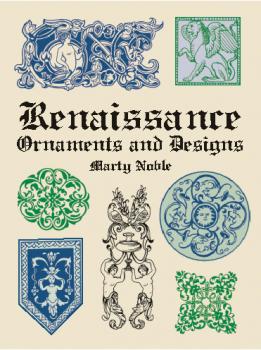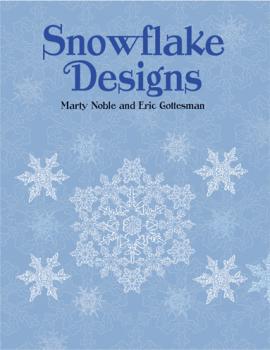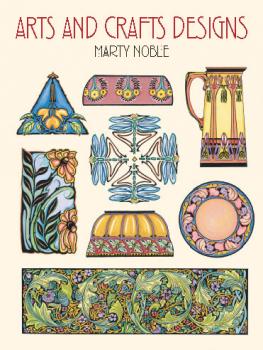Изобразительное искусство, фотография
Различные книги в жанре Изобразительное искусство, фотографияКак самому написать картину маслом
Эта книга предназначена для людей, интересующихся живописью. Кто хочет научиться писать картины маслом здесь найдёт для себя много интересного и полезного. Каждый человек может освоить технику живописи. Для этого нужно желание и терпение. Не обязательно иметь талант художника, чтобы научиться копировать картины других авторов. Этому может научиться каждый человек.
The Art & Illustration of Walter Crane
A prominent figure in the Victorian art world, Walter Crane not only participated in the late nineteenth century's publishing revolution but also led the way toward the Golden Age of Illustration. Crane was instrumental in the transition from simple black-and-white illustrations for children's books to gallery-quality artwork. This original collection features more than one hundred of the influential artist's brilliant images. It constitutes a survey of his paintings as well as a visual history of the development of the first color illustrations.Few artists of Crane's generation achieved careers as varied and successful as his. This compilation reflects the diversity of his subjects, from images for alphabet books, nursery rhymes, and fairy tales to scenes from stories of King Arthur and Robin Hood to illustrations inspired by the classics of Shakespeare, Hawthorne, and Spenser. Editor Jeff A. Menges provides an Introduction that places the artist and his works in historic context.
Art Deco Decorative Ironwork
Sumptuous treasury of 320 lavish examples of architectural ornamentation from the 1920s and '30s by Paul Kiss, Raymond Subes, Edgar Brandt and other artisans. Meticulously reproduced photographs from three rare portfolios depict magnificent designs for doors, grilles, gates, lamps, balustrades, chandeliers, screens, mirrors, and other objects.
Renaissance Ornaments and Designs
The 129 newly rendered and richly detailed designs in this splendid collection depict prime examples of Renaissance ornament. Borders, frames, decorative initials, and other configurations are filled with exquisite images of cherubs, mythical creatures, human figures, floral and foliated designs, interlacings, and more. Adapted from a number of authentic sources.
Victorian Ornamental Plasterwork Designs
Handsome treasury of more than 320 elegant images for use — royalty-free — by today's artists, illustrators, and anyone interested in the interior decor of bygone days. Includes a wealth of floral and foliated sprays, frames and borders of intricate scrollwork, elaborate wall plaques, ceiling roses, cornices and friezes; and much more.
Snowflake Designs
Rich selection of more than 120 intricate images of snowflakes, based on photographs taken by W. A. Bentley (1865–1935) over a 50-year period, will provide an endless source of inspiration for artists, designers and decorators. Royalty-free black-and-white designs are ideal for use in textile and wallpaper designs, for needlework and craft projects.
Gallery of Late-Seventeenth-Century Costume
This volume reprints the celebrated collection of costume plates created in 1694 by noted 17th-century Dutch engraver Caspar Luyken. Executed with remarkable finesse, the superb illustrations depict a wide range of social classes: royalty, courtesans, merchants, laborers, military officers, ladies, gentlemen, soldiers, and a host of other figures representing varied races and countries. (A number of the subjects were drawn in their everyday milieu.) Among the many craftworkers and professionals depicted are a carpenter, mason, tailor, wickerworker, grocer, butcher, astrologer, physician, painter, and musician. This important book will fascinate anyone interested in clothing styles of another era.
Arts and Crafts Designs
Inspirational, practical source of 125 superb, royalty-free illustrations for use by graphic artists and designers. Masterfully adapted from textiles, wallpaper, and other authentic sources, the motifs depict florals and insects etched into glassware, garlands of flowers in square and circular configurations, dragonflies adorning decorative bowls and platters, and much more.
American Antique Weather Vanes
Weather vanes were used by the ancient Greeks a hundred years before the birth of Christ; by early Scandinavians on their ships; and were common throughout England since William the Conqueror, and throughout Europe since the French Revolution. American vanes were recorded since the seventeenth century — among the first known is the copper cockerel, made in 1656 for the Dutch Reformed Church at Albany. The weather vane found a welcome home in the expanding America of the eighteenth and nineteenth centuries. It was a jaunty bit of decoration that served an important utilitarian function and enlivened the whole landscape with its humorous and homespun motifs, bold and vigorous design, and spirited air of American individualism and independence.By the late nineteenth century weather vane design and manufacture had reached full maturity. There were several firms throughout the United States specializing in weather vanes, some of which issued catalogs displaying their wares. Among the largest and most important of these companies was A. B. & W. T. Westervelt of New York City, whose extensive illustrated 1883 catalog, featuring over 550 copper weather vanes and finials, is herein reprinted.This excellent primary source by one of the principal manufacturers of American weather vanes offers an extraordinarily wide range of styles and motifs, including: horse with sulky and driver, cow or bull, gun and cap, goddess of liberty, dog, ram or sheep, Indian chief, hook and ladder with number, oxen, ocean steamer, Roman banneret and scroll, rooster, cannon, fish, pen, locomotive and tender, initials, lion, liberty cap and arrows, malter's shovel and brew barrel, and many more. Vanes are illustrated with line engravings, are especially well suited to reproduction (all royalty-free), and are accompanied by relevant information on size, materials, and original prices.Indispensable for the architect, antique collector, and historian, this collection of authentic weather vane designs will also prove to be an unusually rich source of royalty-free art and graphic inspiration for the artist, designer, and crafter.









